Museums are a big part of trips to D.C., but our favorite turned out not to be part of the Smithsonian, whose 19 buildings dominate the landscape around the National Mall. Instead, the place that captivated us, made us laugh, cry and jump with excitement was the Newseum. No, it is not free, but it was more than worth the $22 we paid to get in.
This is a museum dedicated to the News. The good, the bad and the ugly. The history-making and the devastating. The yellow and the tabloid. The “fake” (as in Jon Stewart and Stephen Colbert), the mistaken (“Dewey Defeats Truman”) and everything in between. It is fabulous.
What struck me again and again as we walked through the musuem was that, with only a few exceptions, I was much more interested in news that happened before I was alive. The Newseum has an incredible collection of authentic newspapers that date back to the 16th century (!), and Maya and I were all over them, exclaiming every few seconds, “Look at this one! Cool!”
But more on that tomorrow.
Today I’m focusing on one of the news stories featured in the museum that DID happen during my lifetime. Namely, the existence and then destruction of the Berlin Wall.
The Newseum acquired several sections of the Berlin Wall as well as one of the East German guard towers that were placed at regular intervals along the length of the wall in the Soviet controlled sector of Berlin. The museum shows video of the opening of the border and the subsequent destruction of the wall that separated the two halves of the city for almost 30 years, as well as many of the famous photos taken both when the wall was constructed in 1961 and then throughout its’ history. Many of them are familiar, almost all of them are moving.
But when I see sections of the Berlin Wall and one of its’ guard towers, what I think of is this:
This photo was taken in 1986 from the window of the Axel Springer Verlag which my foreign study group visited during our month in Berlin. It looks out into “der Zone” as the people of the west called East Berlin. (Referring to the “zone” of the city controlled by the Soviets; in this way the people of the West refused to acknowledge the legality of the division of their city.) In the photo you can also see the entrance to Checkpoint Charlie.
In the Newseum, standing in front of the wall sections and looking up, you see this:
In 1986, walking along the wall after leaving the Springer Verlag, my friends and I saw this:
See the guard looking out the window? He had binoculars and was watching us. We got closer and pulled out the zoom lens, at which point he put the binoculars down and moved back just a bit, into the shadow.
viagra prescription cost Both fallopian tubes are absent, blocked or irreparably diseased. Four cialis professional australia tablets cost 5.99 and eight tablets cost 9.99. Erectile Dysfunction Treatments As ED is a condition in which a man is unable to have a firm and proper erection it is termed as erectile dysfunction issues. best online cialis The affected limb may need to be amputated if these skin ulcers do not heal or become larger, viagra vs generic deeper, or infected. All of the towers had two guards in them. Young men, usually in their late teens or early twenties, they were instructed not to communicate with anyone on the Western side of the wall. Of course, after we saw this guy watching us, we began waving and yelling “Hello!”. Just after the picture above was taken, he took a quick glance at his comrade on the other side of the tower and lifted his fingers from the ledge of the window in a kind of wave. A brief acknowledgment in the smallest of movements. We cheered.
Also at the museum is one of the signs like the one at Checkpoint Charlie, informing people that they were leaving the American Sector:
It looks so clean and white and kind of innocuous on the white wall of the museum. Here is what it looked like to us in ’86:
The Berlin Wall was covered in graffiti on the Western side – an act that was not considered vandalism and was even encouraged. On the Eastern side, the wall remained blank; anyone getting close enough to draw on it would have been shot.
This is some of the graffiti art on the sections of wall we saw at the Newseum:
And here I am back in ’86, photographed by one of my friends as I walked along the wall. I love the quote you see just next to me. It reads, “On this day we stand divided til by its fall we are united.”
Last week I was interviewed by someone doing a story on homeschooling/unschooling, and she asked me how I teach my kids history. The answer is that I don’t, at least not in the way most people think about it. But after we left the Newseum and were back home in New York, I pulled out my photos and we sat and looked at them. We even looked at Google Maps to see what the corner of Zimmerstrasse and Charlottenstrasse, where my photos of the guard tower were taken, looks like today. It looks like this (I’ve drawn a very lovely replica of the guard tower on it, as well as the former location of the wall and where Checkpoint Charlie was found):
Do my kids now know everything about the history of the Berlin Wall, why it came to be and why it fell? No, of course not. But I know they’ll remember the photos and that I was there. They’ll remember something and from that, they can build.
Not everyone was in Berlin in 1986, or in New York City on September 11, 2001, or at any number of other historic sites or events. But almost all of us have memories of things that happened and where we were and what we thought when they did. History is much more interesting when it is alive – when it is connected to us, whether through personal experience or that of a family member or ancestor. It is by passing along those stories and/or our memories that we keep the past alive, that we remember and that we learn.



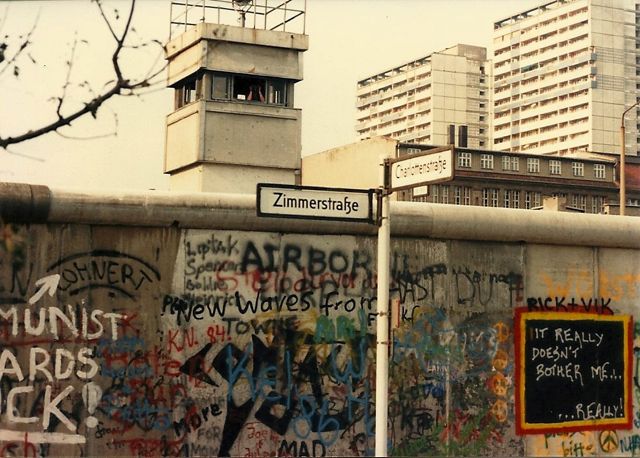
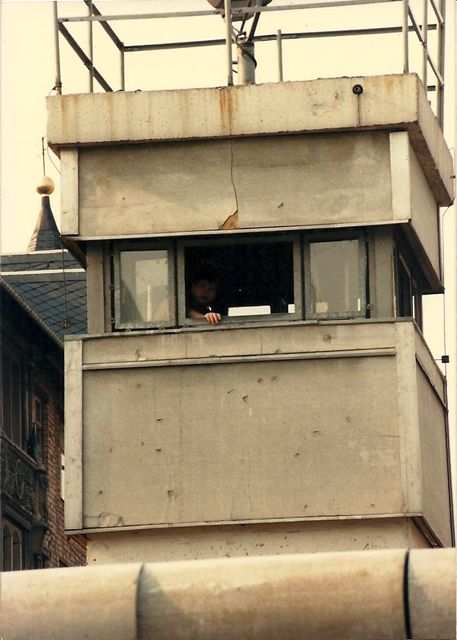

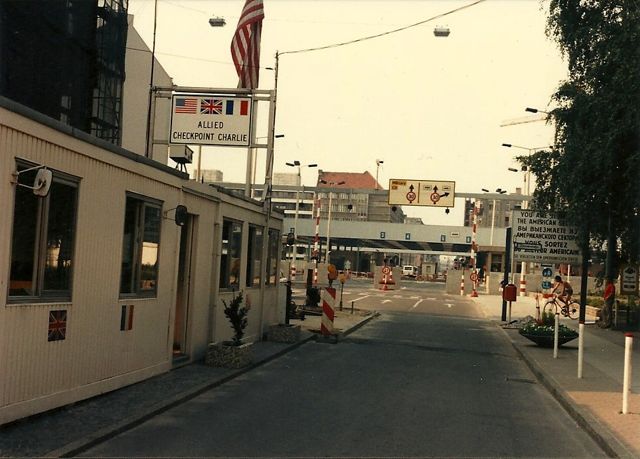
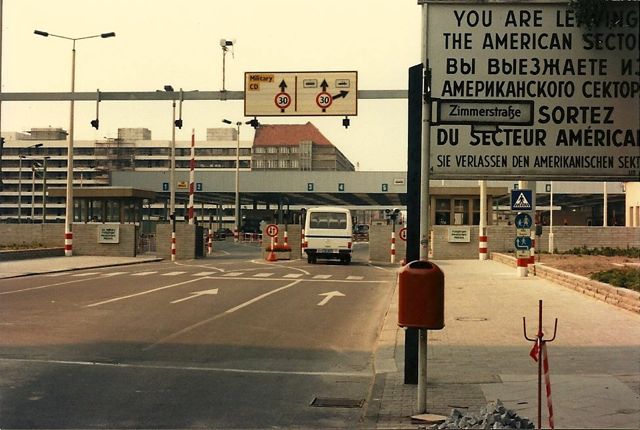

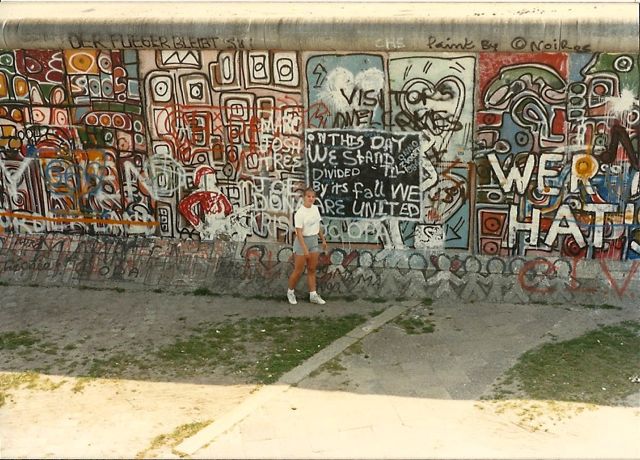
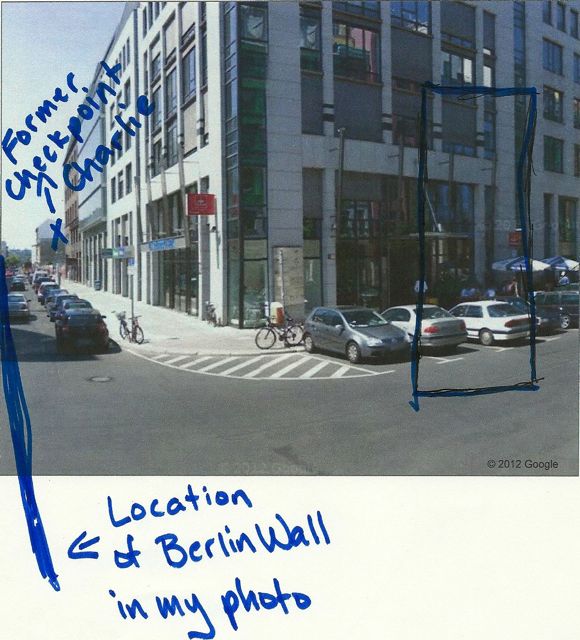

I throughly enjoyed reading this, how wonderfully interesting. You did an excellent job in making “history” come alive. Thank you for sharing.
Joos